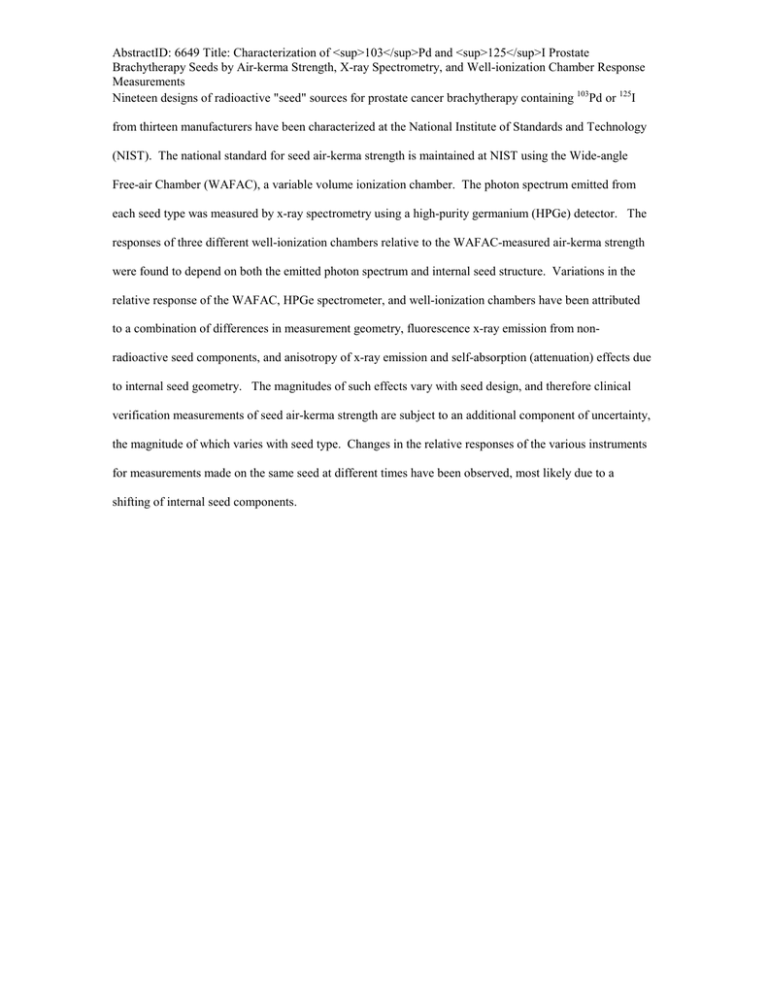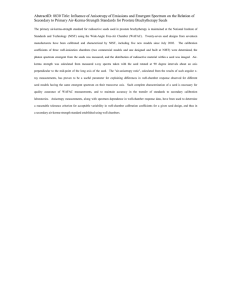Document 14789502
advertisement

AbstractID: 6649 Title: Characterization of <sup>103</sup>Pd and <sup>125</sup>I Prostate Brachytherapy Seeds by Air-kerma Strength, X-ray Spectrometry, and Well-ionization Chamber Response Measurements Nineteen designs of radioactive "seed" sources for prostate cancer brachytherapy containing 103Pd or 125I from thirteen manufacturers have been characterized at the National Institute of Standards and Technology (NIST). The national standard for seed air-kerma strength is maintained at NIST using the Wide-angle Free-air Chamber (WAFAC), a variable volume ionization chamber. The photon spectrum emitted from each seed type was measured by x-ray spectrometry using a high-purity germanium (HPGe) detector. The responses of three different well-ionization chambers relative to the WAFAC-measured air-kerma strength were found to depend on both the emitted photon spectrum and internal seed structure. Variations in the relative response of the WAFAC, HPGe spectrometer, and well-ionization chambers have been attributed to a combination of differences in measurement geometry, fluorescence x-ray emission from nonradioactive seed components, and anisotropy of x-ray emission and self-absorption (attenuation) effects due to internal seed geometry. The magnitudes of such effects vary with seed design, and therefore clinical verification measurements of seed air-kerma strength are subject to an additional component of uncertainty, the magnitude of which varies with seed type. Changes in the relative responses of the various instruments for measurements made on the same seed at different times have been observed, most likely due to a shifting of internal seed components.






